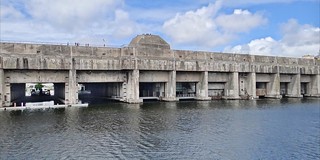The images of the surface of Mercury that have been captured by the BepiColombo mission
Of the eight known planets in the Solar System, Mercury is one of the most interesting because it is the smallest and closest to the Sun.
Due to its proximity to the Sun, its translation (the time it takes to complete its orbit around our star) lasts only 88 Earth days, but its rotation (the spin of 360º of the planet on its axis): it is much slower: if the Earth rotates for almost 24 hours (23 hours, 56 minutes and 4 seconds, to be exact), one day of Mercury lasts 59 Earth days. On the other hand, Mercury (like Venus) has no natural satellites. Mercury is a rocky, cratered planet that looks very much like the Moon.
This small planet had already been visited up close twice by spacecraft: the first visit was by NASA's Mariner 10 probe, which flew over Mercury for the first time on March 29, 1974, completing other two more flybys until March 16, 1975. The second visit was by NASA's MESSENGER probe, which made three more flybys of Mercury, the first of them on January 14, 2008.
On October 20, 2018, the European Space Agency (ESA) and the Japan Aerospace Exploration Agency (JAXA) launched the BepiColombo mission, named after the late Italian scientist Giuseppe "Bepi" Colombo. in 1984 and a great student of that little planet. This joint mission consists of a spacecraft, the Mercury Transfer Module (MTM) , which in turn carries two orbiters: ESA's Mercury Planetary Orbiter (MPO) and ESA's Mercury Magnetospheric Orbiter (MMO). the JAXA. This mission was scheduled to fly by Venus twice and Mercury six times. Venus flybys took place in 2020 and 2021, with its first Mercury flyby taking place on October 2, 2021.
This Monday, June 19, the MTM began its third flyby of Mercury. During the third of its three gravity assist maneuvers on the planet, the MTM's M-CAM3 camera has captured the images of Mercury that you can see next to these lines. The closest image was taken just 236 kilometers from the night side of the planet. The images show the small planet's craters and also a dark spot that according to ESA "might represent remnants of Mercury’s initial crust that was later buried underneath lava plains."
ESA has also published a video of the captured images, with music that "was composed for the sequence by ILĀ, with the assistance of AI tools developed by the Machine Intelligence for Musical Audio (MIMA) group, University of Sheffield":
---
Photos: ESA.
|
Don't miss the news and content that interest you. Receive the free daily newsletter in your email: Click here to subscribe |
- Lo más leído
- A large collection of Volkswagen cars hidden in an abandoned mine in Switzerland
- The Saint-Nazaire submarine base, one of the last bastions of nazi Germany
- The 'Bomber Glacier': The wreckage of a B-29 on a remote mountain of Alaska
- The infiltration of a group of Spanish explorers into the Russian aircraft carrier Minsk
- The unknown Soviet female cosmonaut who died on a mission: history or hoax?
- The supermassive black hole of Phoenix A, the biggest known light-devouring monster
- An old Soviet military plane abandoned from 1971 on a Russian island near Alaska

 ES
ES








Opina sobre esta entrada: